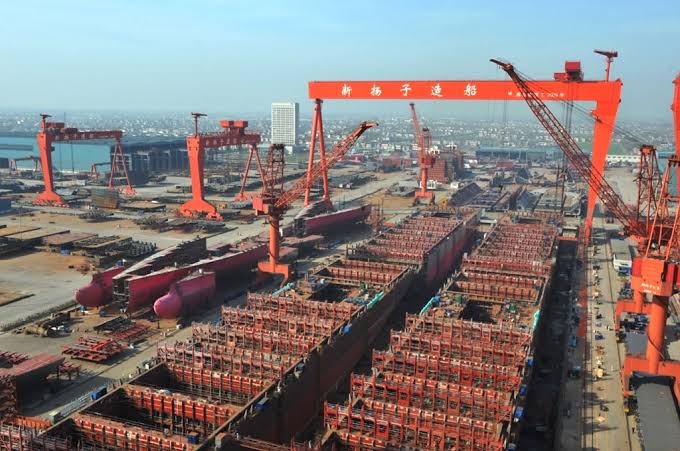
On Friday morning, US-coast port authorities reported an unusual fact: no freighter ship had left China from the region’s two main ports-the port of Los Angeles and the port of Long Beach-in the last 12 hours.
This scenario, which has not occurred since the beginning of the pandemic, raises serious concerns about the impacts of the ongoing trade war between the US and China, as well as its reflexes in the global supply chain.
According to information provided by port authorities to CNN, the number of vessels scheduled to start from China to the San Pedro Bay complex, which encompasses the ports of Los Angeles and Long Beach, dropped dramatically.
Six days ago, 41 ships were scheduled to start from China, but on Friday, the number was reduced to zero. The situation is a direct reflection of commercial tensions and tariffs imposed by President Donald Trump, which make business difficult between the two countries.
Impacts of commercial tariffs
The heavy tariffs imposed by the US government on Chinese imports in the previous month have led to a small number of ships carrying goods. For many companies, doing business with China has become financially unfeasible, given the high cost of tariffs.
As a result, port authorities have observed a significant decrease in the amount of ships and goods that reach the United States, which endangers the efficiency of logistics operations at the busiest ports of the country.
Mario Cordero, CEO of the port of Long Beach, expressed concern about the situation. “We are seeing cancellation numbers and fewer arrivals from higher ships than we witnessed in the pandemic,” he said.
The reduction in load volume has been accentuated, with the Long Beach port registering a 35% to 40% drop from normal volume. The port of Los Angeles observed a 31% decrease this week, and the port of New York and Jersey also prepares for a slowdown.
The most worrying situation occurred in the port of Seattle, which, on Wednesday, did not register the arrival of any container ship, a phenomenon that had not happened since the peak period of the pandemic.
The US and China meeting
Given this scenario, commercial representatives from the US and China have met to try to resolve open business issues. This weekend, in Geneva, there will be the first face -to -face meeting between the two countries, with the objective of appeasing the trade war that has been affecting the relationship between the two powers.
Tariffs applied to China goods that reach the United States reach 145%, while US exports to China face a 125%rate.
President Donald Trump suggested on Friday that tariffs with China could be reduced to 80%, but the final decision will be in charge of Treasury Secretary Scott Bessent.
Concerns about product scarcity
The situation does not only affect companies and ports, but also consumers. According to Cordero, if conditions do not change rapidly, the impact will be directly felt by consumers, with product shortages and price increase. “If things do not change quickly, the uncertainty we are seeing may result in empty shelves in the next 30 days,” he warned.
The port of Long Beach is one of the most important in the country, with more than 63% of the cargo coming from Chinese origin, most of any other US port. However, this number fell from 72% of 2016 as retailers begin to look for alternatives to China due to persistent commercial tensions.
Reduction in load volume
Maersk, the second largest sea company in the world, also commented on the drop in cargo volume between the US and China. According to the company, the volume of goods fell from 30% to 40% compared to normal, a significant reduction that affects commercial flow between the two countries.
Vincent Clerc, CEO of Maersk, pointed out that if the situation with China is not resolved soon, the consequences can become more serious.
“If we do not start seeing a reduction in the situation with China, if we do not start seeing more commercial agreements, we may be in a situation where some of these effects will become more rooted and more adverse,” Clerc said.
Conclusion
The reduction in the number of freighter ships from China, coupled with the drop in goods on the west coast ports of the US, is a direct reflection of the trade war and the tariffs imposed between the two countries.
With the uncertain scenario and the growing impact on logistical operations, the need for a rapid commercial agreement becomes even more urgent. While the authorities of both countries try to find a solution, the negative impact is already visible on global trade, affecting both companies and consumers.
Source: https://www.ocafezinho.com/2025/05/11/escassez-de-navios-cargueiros-da-china-gera-panico-nos-portos-da-costa-oeste-dos-eua/

